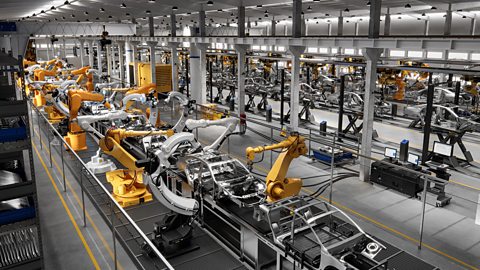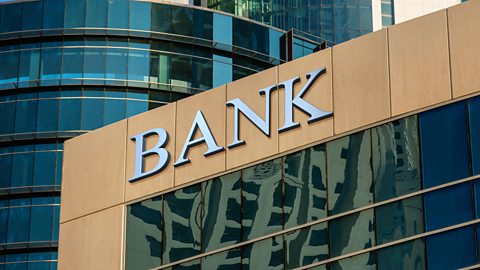Key facts about sources of finance
Internal finance: Owner's capital, retained profit, sale of inventory, selling assets, and debt collection
External finance: Family and friends, bank loans, overdrafts, new partners, share issue, trade credit, leasing, hire purchase, and government grants
Start-ups: Suitable sources include owner's capital, family and friends, bank loans, trade credit, leasing, hire purchase, and government grants
Cash flow and expansion: Suitable sources include owner's capital, family and friends, bank loans, overdrafts, share issue, trade credit, selling assets, retained profit, and new partners
What are internal and external sources of finance ?
Businesses need to consider how they will fund their activities when starting up as well as their day-to-day operations. Various costs need to be covered, such as equipment, stock and paying bills.
Lu discusses how growth is financed
There are different sources of finance for a new business. It can come from the savings of a founder, it can also come from a bank, it can come from friends and family, or it can come from outside investors. So, these are other people who would give you money to start up your own business, but then they would demand a share of your business in return, and they would hope that you would grow the business, so their share would get more valuable over time.
A source, or sources of finance, refers to where a business gets money from to fund their business activities. A business can gain finance from either internal or external sources.
What are internal sources of finance?
Internal sources of finance refer to money that comes from within a business. There are several internal methods a business can use:
Owners capital
Owners capital refers to money invested by the owner of a business. This often comes from their personal savings. Personal savings is money that has been saved up by an entrepreneurA calculated risk-taker who sets up a business in return for financial gain.. This source of finance does not cost the business, as there are no interest charges applied.

Advantage
- quick and convenient
- doesn’t require borrowing money
- no interest payments to make
Disadvantage
- the owner might not have enough savings or may need the cash for personal use
- once the money is gone, it’s gone

Retained profit
Retained profit is when a business makes a profit.
It can leave some or all of this money in the business and reinvest it in order to expand.
This source of finance does not incur interest charges or require the payment of dividends, which can make it a desirable source of finance.

Advantage
- quick and convenient
- easy access to the money
- no interest payments to make
Disadvantage
- once the money is gone, it is not available for any future unforeseen problems the business might face
Sale of inventory
Sale of inventory is the daily selling of products, eg a car dealership sells cars. This is the main source of funds and profits for the business.

Advantage
quick and convenient
easy access to the money
no interest payments to make
Disadvantage
the business might not generate enough sales revenue in the early stages to cover costs
stock sold on credit may lead to cash shortages

Selling assets
Selling assets involves selling products owned by the business.
This may be used when either a business no longer has a use for the product or they need to raise money quickly.
Business assets that can be sold include for example, machinery, equipment, and excess stock

Advantage
can create space for more profitable uses
can be quick
raise money from unused equipment
Disadvantage
might not get the full market value of the assets or even be able to sell them at all
might need the assets in the future

Debt collection
Debt collection is when the business has sold inventory to customers on credit terms (eg has given the customer 30 days to pay). When the debt becomes due for payment, the business contacts the customer and asks for payment.
This is extremely common in B2B (business-to-business) transactions, such as a food supplier giving a restaurant 30 days to pay for the ingredients they bought.

Advantage
quick and convenient
easy access to the money
no interest payments to make
Disadvantage
time-consuming for a small business owner to chase unpaid invoices
may damage relationship with customer
some customers may not pay on time
What are external sources of finance?
External sources of finance refer to money that comes from outside a business. There are several external methods a business can use, including family and friends, bank loans and overdrafts, new partners, share issue, trade credit, leasing, hire purchase and government grants.
Family and friends
Family and friends - businesses can obtain a loan or be given money from family or friends that may not need to be paid back or can be paid back with little or no interest charges.

Advantage
low interest
money may not need to be paid back
Disadvantage
money may be lost if the business fails
arguments may occur between family members

A bank loan
A bank loan is money borrowed from a bank by an individual or business.
A bank loan is paid off with interestInterest refers to additional money paid back on top of the loan, and is the cost of borrowing. over an agreed period of time, often over several years.

Advantage
easy and quick to access
can get a significant amount of money at one time
Disadvantage
have to pay interest
difficult for a new business to access
Mo and Emma calculate interest on bank loans
Mo: I've been thinking, we should go to the bank and get a bank loan.
Emma: We could use it to expand the business, get some new designs, it's basically free money.
Mo: You do know we will have to pay interest, right?
Emma: Most money lenders charge interest on the money they loan to you, meaning you always end up paying back more than you borrowed in the first place.
Mo: So, I'm paying money to get money, that I'm just going to give back anyway. Can't we just pay them back?
Emma: Banks have to make money too, Mo. That's just one way they do it.
Mo: So, we could borrow one hundred pounds and pay back one hundred and twenty pounds.
Emma: So, how would we calculate the interest?
Mo: It would be the total repayment, one hundred and twenty pounds, minus the borrowed amount. We're borrowing one hundred pounds. So, one hundred and twenty minus one hundred, twenty pounds.
Emma: That's the interest, now to get the rate, we divide the twenty pounds total interest by the one hundred pounds that we borrowed. Multiplied by one hundred to get the percentage.
Mo: Exactly.
Emma: That gives us a twenty percent rate of interest.
Mo: That's more than I thought.
Emma: Plus, interest rates can vary. It's cheaper to borrow money when interest rates are low, because then we don't have to pay back as much in interest. Higher interest rates make borrowing money more expensive. It's the same for our customers.
Mo: So, if it's more expensive to borrow money, people might not be able to afford loans, so our customers might have less money to spend on our t-shirts.
Emma: It was more fun when I thought the money was free.
A mortgage is just a loan, but secured on property; this means that if a business does not keep up repayments, the bank can repossess the building and then resell it to someone else to get the unpaid debt back.

Overdrafts
Overdrafts - are where a business or person uses more money than they have in a bank account. This means the balance is in minus figures, so the bank is owed money.
Overdrafts should be used carefully and only in emergencies as they can become expensive due to the high interest rates charged by banks.
Advantage
allows emergency purchases
quick access
Disadvantage
high interest rates
is only a short term solution
New partners
New partners - is when an additional person or people are brought into the business as a new business partner.
This means they would provide money to then own part of the business.

Advantage
easy way to gain money
potential to raise huge amount of money
they may offer advice and help
Disadvantage
owner must give away part of the business
they may have a different vision for the business than the owner does

Share issue
Share issue - a business may sell more of their ordinary sharesA share of a company entitling its holder to dividends which vary in amount depending on whether the company has a good or bad year. to raise money.
Buying shares gives the buyer part ownership of the business and therefore certain rights, such as the right to vote on changes to the business.
Advantage
can gain lots of money quickly
no interest payable
Disadvantage
give away part of the business
leaves a business open to takeovers
shareholders receive dividends

A trade credit
A trade credit must be agreed with a supplier and forms a credit agreementA credit arrangement is a contract made between a business and a supplier. It outlines when payments must be made. with them. This source of finance allows a business to obtain raw materials and stock but pay for them at a later date.
The payment is usually made once the business has had an opportunity to convert the raw materials and stock into products, sell them to its own customers, and receive payment.

Advantage
access to supplies without immediate payment
no interest
Disadvantage
short term, must be paid off quickly
usually small amounts
Leasing
Leasing - is a way of renting an asset that the business requires, such as a coffee machine.
Monthly payments are made and the leasing company is responsible for the provision and upkeep of the leased item.

Advantage
no large upfront payments
leasing company may be responsible for repairs and maintenance
Disadvantage
over time it can be a more expensive way to obtain assets
assets aren’t owned by the business

Hire purchase
Hire purchase - is used to purchase an asset, such as a delivery van or piece of equipment.
A deposit is paid and the remaining amount for the asset is paid in monthly instalments over a set period of time.
The business does not own the item until all payments are made.

Advantage
- expensive assets can be purchased and paid back over time
Disadvantage
interest is charged on hire purchase items
equipment is not owned until the final payment is made
Government grants
Government grants - are a fixed amount of money awarded by the government. Grants are given to a business on the condition that they meet certain criteria such as providing jobs in areas of high unemployment. These do not usually need to be paid back.

Advantage
does not need to be paid back
available to small businesses
Disadvantage
business needs to meet certain criteria
it is time-consuming to apply for grants and to complete the paperwork
Suitability of the different sources of finance
Different sources of finance are suited to different business contexts, for example, start-up businesses, businesses experiencing cash flow issues, and expanding businesses.
Start-up business

Start-up businesses are most suited to the following types of finance:
- owner’s capital – owners are likely to use their own money to start the business
- family and friends – often provide new business owners with finances
- a bank loan – could be difficult to get, but is possible with a detailed business plan
- trade credit – can be used to help a start-up business spread its costs
- leasing and hire purchase – are both used by new businesses to spread costs on equipment it otherwise may not be able to afford
- government grants – may be used if a business fits the criteria
Cash flow issues

Businesses with cash flow issues are most suited to the following types of finance:
- owner’s capital – owners are likely to use their own money to cover some of the debts
- family and friends – may help out in difficult financial times
- bank loan – could be difficult to get, but is possible with a detailed business plan
- overdraft – this will allow the business to gain some temporary finances
- share issue – this could be used to sell off part of the business to raise finance
- trade credit – can be used to help delay some business costs
- selling assets – may be used as a last resort to gain money
Expansion

A growing business is most suited to the following types of finance:
- retained profit – an expanding business will likely have some spare profit they can use to invest
- bank loan – could be used to provide money to grow the business
- share issue – this could be used to sell off part of the business to raise finance
- new partners – a business may invite new partners to invest and help them grow the business
Try the sources of finance quiz
Final check:
What is an internal source of finance that a business might use to fund its activities?
An internal source of finance is retained profit, where the business reinvests its own profit to fund activities without needing to borrow money.